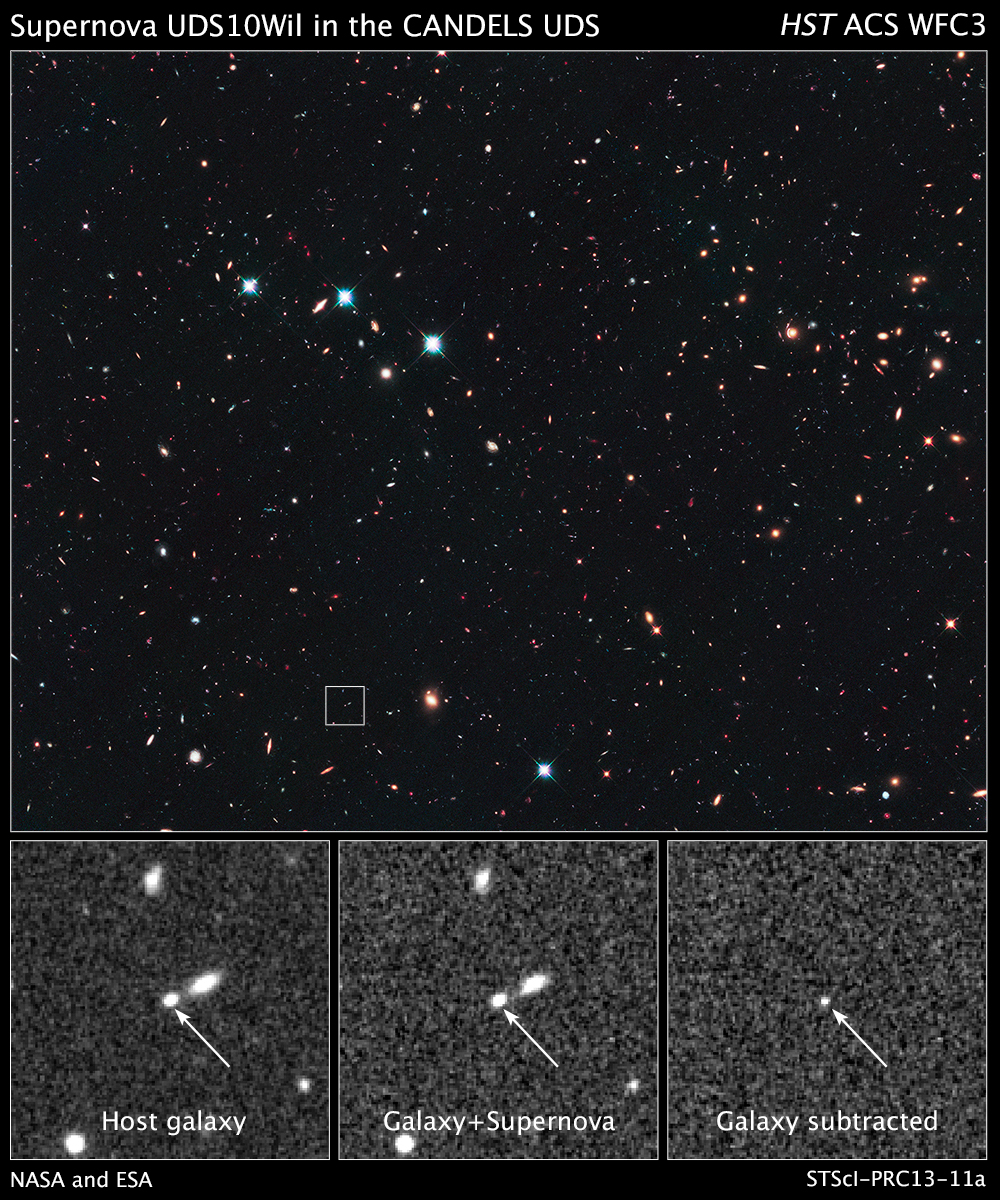Farthest Star Explosion Yet Revealed by Hubble

Astronomers have spotted the most distant massive star explosion of its kind, a supernova that could help scientists better understand the nature of the universe.
Using the Hubble Space Telescope, scientists recently caught sight of Supernova UDS10Wil (nicknamed SN Wilson) which exploded more than 10 billion years ago. It took more than 10 billion years for the light of this violent star explosion to reach Earth.
SN Wilson is known as a Type Ia supernova — a particular kind of star explosion that gives scientists a sense of how the universe has expanded over time.
"This new distance record holder opens a window into the early universe, offering important new insights into how these stars explode," research leader David Jones of Johns Hopkins University in Baltimore, Md., said in a statement. "We can test theories about how reliable these detonations are for understanding the evolution of the universe and its expansion." [See Amazing Pictures of Supernovas]

SN Wilson is only four percent more distant than the last most distant supernova of its kind found by Hubble, NASA officials said in a statement. However, that is still 350 million years further back in time than any other previously found star explosion.
By understanding when massive stars began exploding, scientists can get a sense of how quickly the universe was seeded with the elements needed to create planets and other cosmic bodies.
"If supernovae were popcorn, the question is how long before they start popping?" Adam Riess, an astronomer at the Space Telescope Science Institute in Baltimore, Md., said in a statement. "You may have different theories about what is going on in the kernel. If you see when the first kernels popped and how often they popped, it tells you something important about the process of popping corn."
Get the Space.com Newsletter
Breaking space news, the latest updates on rocket launches, skywatching events and more!
This work also might contribute to other work being done on what triggers these massive explosions, a question that has plagued astronomers since the discovery of Type Ia supernovas.
This discovery is also part of a three-year-initiative by the Hubble program to find the most distant supernovas. Scientists with the program hope to understand if the star explosions have changed in some way since the Big Bang birthed the universe 13.8 billion years ago.
The Hubble Space Telescope was launched in 1990. It is expected to continue functioning for the next five years or so, and its successor, the James Webb Space Telescope, is scheduled for launch in 2018.
The new findings will be published in an upcoming issue of "The Astrophysical Journal."
Follow Miriam Kramer @mirikramer and Google+. Follow us @Spacedotcom, Facebook and Google+. Original article on SPACE.com.
Join our Space Forums to keep talking space on the latest missions, night sky and more! And if you have a news tip, correction or comment, let us know at: community@space.com.

Miriam Kramer joined Space.com as a Staff Writer in December 2012. Since then, she has floated in weightlessness on a zero-gravity flight, felt the pull of 4-Gs in a trainer aircraft and watched rockets soar into space from Florida and Virginia. She also served as Space.com's lead space entertainment reporter, and enjoys all aspects of space news, astronomy and commercial spaceflight. Miriam has also presented space stories during live interviews with Fox News and other TV and radio outlets. She originally hails from Knoxville, Tennessee where she and her family would take trips to dark spots on the outskirts of town to watch meteor showers every year. She loves to travel and one day hopes to see the northern lights in person. Miriam is currently a space reporter with Axios, writing the Axios Space newsletter. You can follow Miriam on Twitter.









